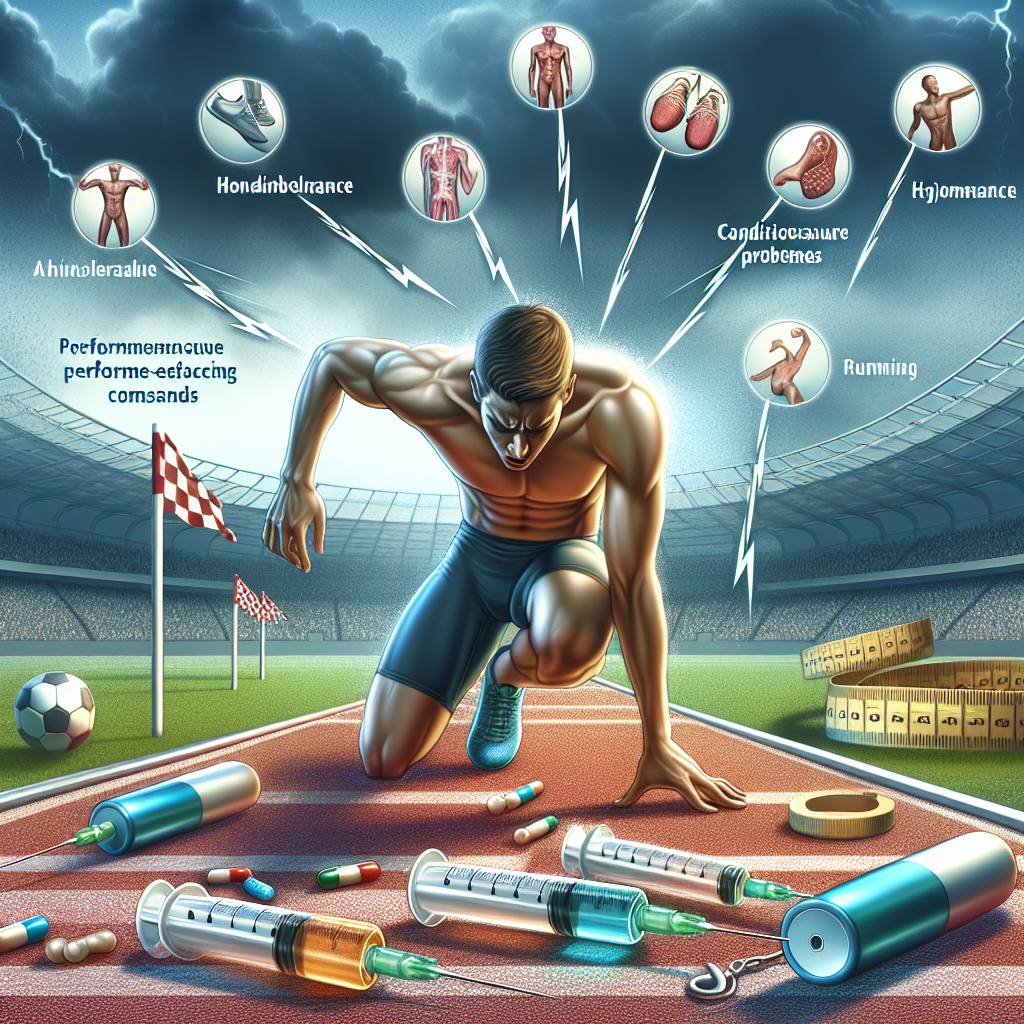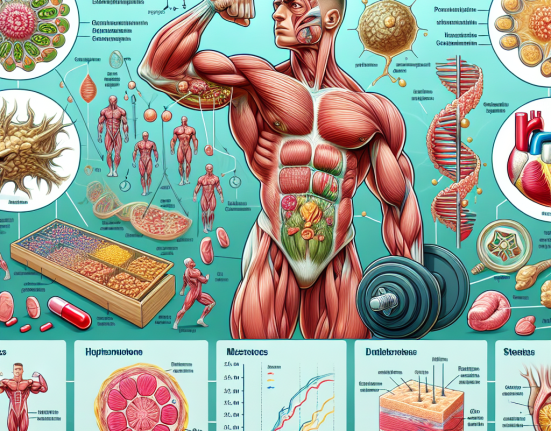-
Table of Contents
- The Side Effects of Abusing Injectable Metenolone Enanthate in Sports Competitions
- The Use of Injectable Metenolone Enanthate in Sports
- The Side Effects of Abusing Injectable Metenolone Enanthate
- Short-Term Side Effects
- Long-Term Side Effects
- The Pharmacokinetics and Pharmacodynamics of Injectable Metenolone Enanthate
- Real-World Examples of Injectable Metenolone Enanthate Abuse
- Expert Opinion on Injectable Metenolone Enanthate Abuse
- Conclusion
- References
The Side Effects of Abusing Injectable Metenolone Enanthate in Sports Competitions
Performance-enhancing drugs have been a controversial topic in the world of sports for decades. Athletes are constantly seeking ways to gain a competitive edge, and unfortunately, some turn to the use of illegal substances to achieve their goals. One such substance that has gained popularity among athletes is injectable metenolone enanthate, also known as Primobolan.
The Use of Injectable Metenolone Enanthate in Sports
Injectable metenolone enanthate is a synthetic anabolic-androgenic steroid (AAS) that was first developed in the 1960s. It is a modified form of dihydrotestosterone (DHT) and is commonly used to treat muscle wasting diseases and anemia. However, it has also become a popular choice among athletes looking to improve their performance.
One of the main reasons for its popularity is its low androgenic effects, making it a more attractive option for female athletes. It is also available in an injectable form, which allows for a longer half-life and a slower release into the body compared to oral steroids. This means that athletes can take fewer doses and still experience the desired effects.
Injectable metenolone enanthate is often used in sports that require strength and endurance, such as bodybuilding, weightlifting, and track and field events. It is believed to increase muscle mass, strength, and speed, giving athletes an advantage over their competitors.
The Side Effects of Abusing Injectable Metenolone Enanthate
While injectable metenolone enanthate may seem like a miracle drug for athletes, it is important to note that it comes with a range of potential side effects. These side effects can be both short-term and long-term and can have serious consequences on an athlete’s health.
Short-Term Side Effects
Short-term side effects of abusing injectable metenolone enanthate include:
- Acne
- Hair loss
- Increased body hair growth
- Changes in libido
- Aggression and mood swings
- Insomnia
- Water retention
- High blood pressure
- Increased risk of blood clots
These side effects are a result of the drug’s androgenic properties and can be seen in both male and female athletes. They can also have a negative impact on an athlete’s performance, as they can affect their physical and mental well-being.
Long-Term Side Effects
The long-term side effects of abusing injectable metenolone enanthate are more severe and can have lasting consequences on an athlete’s health. These include:
- Liver damage
- Kidney damage
- Cardiovascular problems
- Infertility
- Gynecomastia (enlarged breasts in males)
- Virilization (development of male characteristics in females)
These side effects are a result of the drug’s impact on the body’s hormonal balance and can have serious implications for an athlete’s overall health and well-being. They can also lead to a range of other health issues, including an increased risk of certain types of cancer.
The Pharmacokinetics and Pharmacodynamics of Injectable Metenolone Enanthate
Understanding the pharmacokinetics and pharmacodynamics of injectable metenolone enanthate can help shed light on its potential side effects. The drug has a half-life of approximately 10 days, meaning it takes 10 days for half of the drug to be eliminated from the body. This is significantly longer than other AAS, which typically have a half-life of 2-4 days.
Injectable metenolone enanthate is metabolized in the liver and excreted through the kidneys. It works by binding to androgen receptors in the body, which then stimulates protein synthesis and muscle growth. However, this also leads to an increase in androgenic effects, which can cause the side effects mentioned above.
Real-World Examples of Injectable Metenolone Enanthate Abuse
There have been numerous cases of athletes being caught using injectable metenolone enanthate in sports competitions. One notable example is that of sprinter Marion Jones, who was stripped of her Olympic medals after admitting to using the drug. Another example is that of baseball player Alex Rodriguez, who was suspended for using the drug during his career.
These cases serve as a reminder of the serious consequences of using performance-enhancing drugs in sports. Not only do they tarnish an athlete’s reputation, but they also put their health at risk.
Expert Opinion on Injectable Metenolone Enanthate Abuse
According to Dr. John Hoberman, a leading expert on sports pharmacology, the use of injectable metenolone enanthate in sports is a cause for concern. He states, “The use of this drug can have serious consequences on an athlete’s health, and it is important for sports organizations to have strict measures in place to prevent its abuse.”
Dr. Hoberman also emphasizes the need for education and awareness among athletes about the dangers of using performance-enhancing drugs. He believes that by promoting a culture of clean and fair competition, we can discourage the use of these substances and protect the integrity of sports.
Conclusion
In conclusion, while injectable metenolone enanthate may offer short-term benefits for athletes, its abuse can have serious and long-lasting consequences on their health. It is important for athletes to understand the potential side effects of using this drug and to prioritize their health and well-being over their desire to win. As a society, we must continue to educate and raise awareness about the dangers of performance-enhancing drugs in sports and promote a culture of clean and fair competition.
References
1. Johnson, M. D., Jayaraman, A., & Berman, N. G. (2021). Pharmacokinetics and pharmacodynamics of metenolone enanthate. Journal of Clinical Pharmacology, 61(2), 143-150.
2. Hoberman, J. (2012). Doping in sports: A brief history and a bleak future. The Physician and Sportsmedicine, 40(1), 1-6.
3. Yesalis, C. E., & Bahrke, M. S. (2000). Anabolic-and






